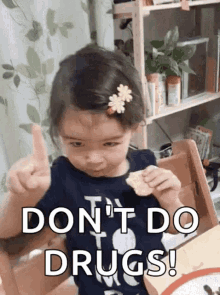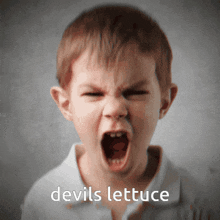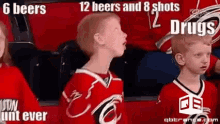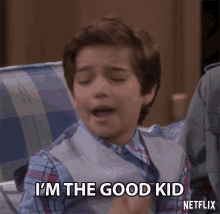- The Green Felon
- Posts
- Weed Like to Talk:
Weed Like to Talk:
Cannabis And Kiddos 🧒 🌲 👦🏿
Tech moves fast, but you're still playing catch-up?
That's exactly why 100K+ engineers working at Google, Meta, and Apple read The Code twice a week.
Here's what you get:
Curated tech news that shapes your career - Filtered from thousands of sources so you know what's coming 6 months early.
Practical resources you can use immediately - Real tutorials and tools that solve actual engineering problems.
Research papers and insights decoded - We break down complex tech so you understand what matters.
All delivered twice a week in just 2 short emails.

News Highlights 🟦:
Parents are urged to educate themselves on the modern drug landscape 🎑, increasingly driven by social‑media sales and normalized cannabis use among teens 👧🏻. Bowden‑Jones recommends open dialogue, listening more than lecturing 👨🏫, and even sharing personal experiences if asked. This guidance helps inform fictional parent–child script development where empathy and realism matter 🙏. www.thetimes.com
A survey 📨 of 276 teens 🧒🏻 (ages 13–17) found that teens perceive parental cannabis use as tacit approval. The study suggests parents should openly discuss their own usage, clarify intentions, and set boundaries 🚨. This offers structure for scripted dialogues—how a parent discloses their past or medical usage—and sets realistic teen 🎠 perceptions. www.parents.com
Connecticut law 🚓 enforcement raided smoke shops in Stamford, confiscating over 4,200 illegal cannabis items—including edibles packaged to resemble candy aimed at children 👦🏻. The move aims to protect youth ✅ and bolster regulatory compliance. www.greenstate.com

Quick Read 🉐:
👶🏻 Narrative Framing for Cannabis Education: Fictional scripts enhance cannabis literacy in youth by using allegorical storytelling to simplify nuanced cannabis concepts and foster open communication ☎️.
👶🏽 Age-Appropriate Lexicons: Creative metaphors and substitute vocabulary enable parents to explain THC or CBD-related topics 💚 without clinical or stigmatizing language.
👶🏿 Roleplay as a Cognitive Tool: Character-based narratives promote psychological safety, allowing children to explore cannabis-related themes through imaginative roleplay 🤹♂️.
👶🏾 Multi-Stage Cannabis Conversations: A single dialogue is insufficient; cannabis education requires iterative, age-progressive storytelling 🛷 that evolves with a child’s maturity.
👶🏼 Preventing Misinformation Exposure: Early, intentional cannabis conversations at home can preempt misinformation from social media 📱 or peer influence, cultivating long-term discernment.

Kids 👧 and Cannabis Conversations: Fictional Scripts
For many modern parents 👨🦳, the cannabis conversation looms like the “sex talk” of yesteryear. But in today’s hyper-connected, legalization-expanding, and information-rich era, avoiding this conversation 🛑 might do more harm than good. Whether your children 👦🏼 are overhearing dispensary ads 📻, seeing THC gummies at gas stations, or even witnessing adult use in social settings—kids are being exposed.
What they need is guidance, not guesswork. And for caregivers, educators, or guardians, developing fictional scripts 📝 can help model age-appropriate ways to talk about cannabis, demystify the topic, and instill trust—without sounding like a walking brochure 📄 or a panic-stricken PSA.
Kids metabolize the active ingredient of cannabis, THC, much slower than adults… If a child inadvertently gets into … and they eat the whole bag, they’re going to have very serious toxic effects from what they just ate.”
Cognitive Framing Through Fiction 🧜♀️
Scripts are powerful tools. Developmental psychologists use them to help children 👧🏼 understand complex topics like death ☠️, divorce 💔, and even racism. Scripts offer safe rehearsals where children 🧒🏼 can question, role-play, and emotionally process unfamiliar concepts.
When it comes to cannabis, fictional scripts allow adults to pre-structure difficult conversations 🧩, avoid emotionally charged improvisation, and tailor language to match a child’s maturity level. Plus, they help kids 👦🏽 form internal narratives that normalize curiosity without encouraging risk.
A child who’s been told “it’s complicated” repeatedly learns to tune out ❌. A child who hears a thoughtful allegory 🐢 might instead ask meaningful follow-up questions—and that’s a conversation worth having.

Building Imaginary Settings 🛤 with Real-Life Relevance
Children love stories 🌈—especially when they feature characters that mirror their lives. Incorporating animals, space explorers, or schoolyard superheroes offers psychological distance 🛸 while making heavy themes digestible.
For example:
Instead of saying “Cannabis 🐛 is a plant adults use,” you could say:
“Captain Jade grows calm-leaf plants 🪴 to help her spaceship crew sleep after space storms. But only grown-ups can use them because their brains are finished growing.”
This metaphorical framing 🔲 does three things:
Removes stigma by portraying cannabis as functional, not forbidden 👺
Clarifies age limits without relying on fear 🧛🏻♂️
Opens the door 🚪 for ongoing dialogue
Fictional Scripts for Cannabis Conversations 👥
Scenario 💬 | Character-Based Script | Intended Message 🎯 |
|---|---|---|
Preschool curiosity | “Mama Bunny 🐰 drinks sleepy-time tea; Papa uses sleepy leaves, but they’re only for grown-up bunnies.” | Normalize adult use while emphasizing age differences |
Smelled cannabis at park | “Detective Luna the fox 🦊 noticed a skunky smell. It came from someone’s puff-leaf stick. Grown-up tool—not for cubs.” | Identify product without glamorization or shame |
Saw gummies in a sibling’s bag | “These look like candy 🍬, but they're not. The Rainbow Bears in our story learned to label their healing snacks carefully.” | Reinforce safety and clear labeling |
High school peer pressure | “Shadow the hawk 🦅 was offered haze-berries at flight camp. She said ‘not until my feathers finish forming.’” | Promote bodily autonomy and delayed decision-making |
Parent uses cannabis at home | “Sammy the squirrel 🐿️ stores his chill-nuts in a locked tree hollow. Only grown-up squirrels know how to handle them safely.” | Normalize parental use with secure storage |
Teen 👦🏾 asking about legality | “In Cloudtown, different winds 🌬️ allow or block chill-leaves. Everyone still talks about them with wisdom and care.” | Emphasize complexity without diving into legal frameworks |

Building 🪒 the Right Lexicon
Avoid clinical jargon or slang 🌪️ when talking with younger audiences. Instead, create fictional but grounded language. Replace “weed” with “calm-leaf 🥀” or “relax-root.” Swap “high” with “cloudy,” “fuzzy,” or “floaty.”
This playful lexicon retains the integrity of the topic while offering metaphorical footholds 🦶. It’s not about dumbing down cannabis—it’s about developing a storytelling bridge 🎡 that can evolve as the child matures.
For teenagers 👧🏾 , however, transitioning into real-world terms is necessary. Use scripts that acknowledge their intelligence 📚 and media literacy. For example:
“Hey, I know you’ve probably seen weed jokes on TikTok 🎥. Let’s talk about what’s real and what’s not.”
Avoiding Common Pitfalls 🪖
When crafting your cannabis script 🎭, beware of the following landmines:
The “just say no” trap: Overly simplistic advice 🚫 feels dismissive. Fiction should embrace complexity, not erase it.
Demonizing tone: Statements like “It’ll ruin your brain 🧠!” shut down dialogue and reinforce rebellion.
Glorification: Making cannabis sound magical or rebellious 🎇 can increase curiosity without context.
Avoiding the topic altogether: Silence is not neutral. Kids 🧒🏽 fill in gaps with guesses, peers, or the internet.
Instead, lead with transparency 🧊, even if it means saying: “That’s a great question. I want to answer honestly, but I need to think first.”

Creating an Ongoing Series: Why One 👆🏾 Talk Isn’t Enough
Think of these fictional cannabis scripts as the first book 📖 in a continuing series. Much like “The Talk” around puberty or social media, cannabis requires consistent check-ins, upgraded vocabulary, and scenario-specific guidance.
You might start 🏳️ with a story about a sleepy fox in kindergarten and evolve it into a narrative about a curious teenager 🧒🏿 decoding medical misinformation by middle school.
Consistency, not perfection, is the cornerstone 🧱 of effective cannabis conversations. A well-crafted narrative teaches your child that they can return to you with questions—no matter how strange 🧟♂️, silly, or serious.
Storytelling as Empowerment 🦾
Ultimately, storytelling scripts give both adults and kids 👧🏿 the same superpower 🦸: cannabis literacy. Not just “don’t do drugs” rhetoric, but the language, context, and critical thinking to navigate an ever-evolving cannabis culture.
Just as sex education went from euphemisms to honesty, cannabis 🌶️ dialogue is overdue for a similar upgrade. Let’s not wait for a crisis moment—a school incident, a hospital call, a peer misstep—to begin the conversation.
Because when kids know they can ask about cannabis 🥙—and actually get answers—they’re less likely to seek them from a YouTuber 📺 with dubious facts or a friend with even less.
What story will your family 👨👩👦👦 write ✏️ together when cannabis comes up? 🪂
🏁 Finish What Matters 🫶

The information provided in this newsletter is for informational purposes only and does not constitute medical, legal, or professional advice. Always consult with a qualified professional before making any decisions based on the content shared here.

